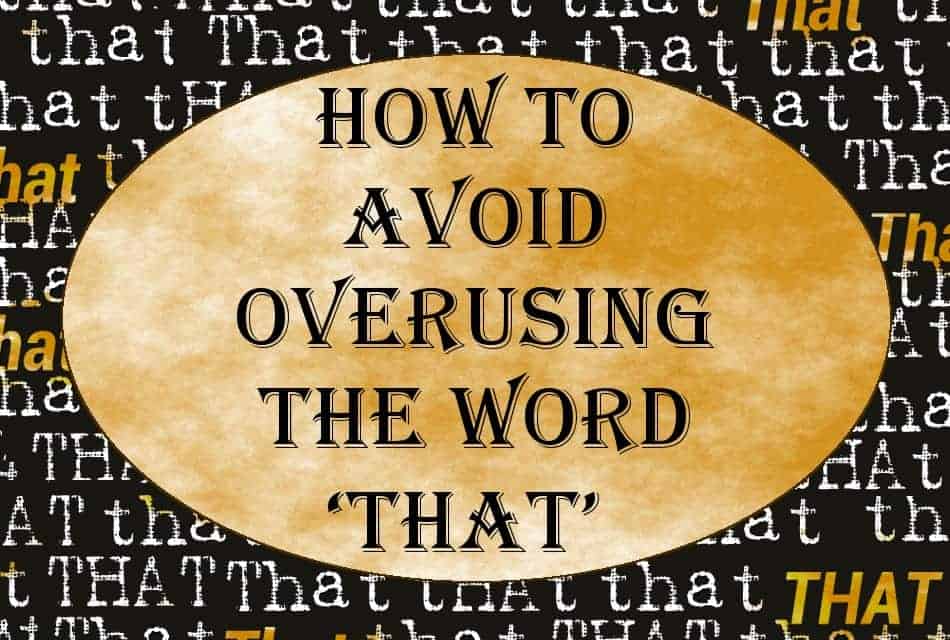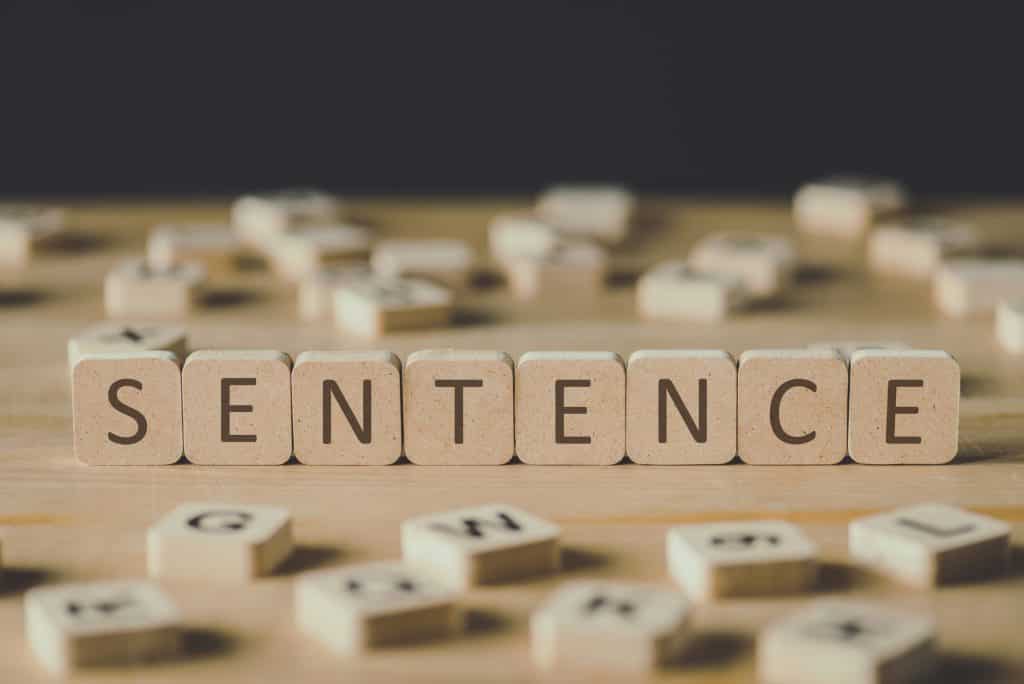I am adding to what StoneyB said in answer to the question, «When can I remove the word “that” in a sentence?» I was asking the same question myself, about when to or not to use «that.» The sentences I was unsure of using were «I am sorry that I did not call you,» or «I am sorry I did not call you.»
While reading StoneyB’s response, I was having a hard time absorbing to «parts of speech» terminology. I never did well with that in high school — my solution was to verbalize the sentence in my mind and if it sounded correct, I went with it! This method may work okay for those who have heard and spoken Americanized English for a long time, but is not the best advice for the English Language Learner.
All I have done is to add some of my own personal examples and maybe clarify the parts of speech that StoneyB discussed in his post. I stand to be corrected by anyone, please.
Knowing when or when not to use the word «that» in a sentence when you feel that you use it too often:
Example 1 — «that» — relative pronoun:
«It’s the same meatloaf that (used as a relative pronoun) we had yesterday.»
You can leave out the «that» in the sentence above because «it acts as the direct object of the verb in the relative clause» (StoneyB, 2014).
Direct object of the verb? — Leave it out.
«It’s the same meatloaf we had yesterday.» — Correct.
However, if it is used as the »subject of the verb in the relative clause» (StoneyB, 2014), you could not leave it out:
«It’s the same meatloaf that (subject) won (verb) in the cook-off.»
Subject of the verb? — Leave it in.
«It’s the same meatloaf ___ won in the cook-off.» — Not correct.
Example 2 — «that» — subordinating conjunction:
«I am sorry that (used as a subordinator) I did not call you.»
That appears in front of the subordinate clause and behind the verb (am), in the main clause.
«I am sorry I did not call you.»
Both uses are fine.
Example 3 — «that» — subject of the sentence:
If «that» is the subject of the sentence, it cannot be left out:
«That I am inconsiderate is a matter to be discussed later.» — Correct.
Example 4 — «that» — conjunction which does not appear and is not spoken close to the main verb in the sentence:
When the verb in the main clause is separated from the subordinate clause by a lot of other words, such as those used as part of an adverbial phrase, the that must remain for clarity in writing. In spoken English, it may be okay to leave it out, but it sounds a bit lazy to me.
Formal writing: «I am sorry in so, so, very many ways that (still used as a conjunction) I did not call you.» — Correct.
Spoken English: «I am sorry in so, so, very many ways I did not call you.» — Okay, but awkward.
Example 5 — «that» — predicative complement used with a verb:
Without the predicative complement, the sentence would not tell us much — for example, «Many folks thought,» does not stand well on its own, giving very little information about what was thought.
«Many folks thought that my meatloaf was better.» — Correct.
«Many folks thought my meatloaf was better.» — Okay in speech, but not so good in writing.
Sources:
English Language Learners Stack Exchange, (2014). When can I remove the word «that» in a sentence? — asked by T2E on May 26, 2013. Answered by StoneyB on May 27, 2013, edited March 7, 2014.
Englishpage, (2015). Forum thread: English Language Questions: Predicative Complement. Asked by Camilus, Member, April 17, 2004. Answered by Pete, Super Moderator, April 19, 2004.
http://www.englishpage.net/showthread.php?655-Predicative-Complement
For a few years during elementary school, virtually every sentence my friends and I uttered included the word “like.” This awful speech habit led to plenty of well-deserved ridicule, which made me determined to stop overusing unnecessary words. I thought I was succeeding on this front for years, until I started doing freelance writing assignments for a client who wasn’t a fan of superfluous words, including “that.” Then, I learned just how guilty I was of overusing the word “that” in my writing. It was basically my new, written version of “like.”
While phasing out “like” was pretty simple, removing unnecessary uses of “that” from my writing proved challenging because this word legitimately belongs in many sentences. To help you avoid similar grief, today I’d like to share a few tips for avoiding overusing “that” and using “that” in a sentence correctly.
When to Use ‘That’ in a Sentence
First, it’s important to know when “that” is really needed in a sentence. This word frequently attaches dependent clauses to independent clauses, and it is strictly necessary if a clause begins with certain subordinating conjunctions, such as before, while and in addition to. “That” also should be used before clauses that clarify a noun.
- She said that although the sunrise workout sounded like a brilliant idea, sleeping in also sounded good.
- The notion that their project would be finished by the original deadline was laughable.
“That” additionally should appear after certain verbs, such as contend, estimate and point out. If you’re a native speaker, you can probably intuitively identify many of these verbs.
- He enthusiastically declared that he would stop procrastinating tomorrow.
You also should use “that” if a sentence would sound awkward without it. If you’re in doubt, include it, since this does less harm than incorrectly omitting it.
When to Leave Out ‘That’
To decide whether you can omit “that” from a sentence, check how naturally and intelligibly the sentence reads without it. Usually, you can drop “that” if it follows a verb that essentially means “to say.” This omission mimics natural speech and shouldn’t change the meaning of the sentence.
- The children claimed an ice cream break would help them study more effectively.
- She insisted she wasn’t responsible for the houseplant’s untimely death.
However, it’s usually better to keep “that” if other words fall between the verb and the dependent clause.
- The kids also said this morning that a television break would enhance their studying.
- She admitted begrudgingly that she might have contributed to the plant’s demise.
You also can usually omit “that” if it precedes a simple relative clause.
- Neither of them was particularly excited about the compromise (that) they reached.
Using ‘That’ Twice in a Row
When you’re trimming unnecessary uses of “that” from your writing, be sure to pay attention to sentences where it appears multiple times or even twice in a row (“that that”). These sentences can be grammatically correct but stylistically undesirable. For example, at BKA, we use Associated Press Style, which requires sentences to be constructed in a manner that eliminates consecutive uses of “that.”
- He confessed that that plan had been formulated on three hours of sleep.
- He confessed that they had only slept three hours when they formulated that plan.
Even if you’re not following a strict style guide, it’s often beneficial to try revising sentences to avoid using “that” too redundantly.
Using ‘That’ or ‘Which’
It can be tempting to cut back on “that” by replacing it with “which,” but these words aren’t actually interchangeable. “That” introduces information that is integral to the meaning of a sentence, while “which” precedes information that is non-essential and offset by commas.
- The first kindergarten class that all 31 students attended was miraculously free of mishaps.
- The first kindergarten class, which all 31 students attended, was miraculously free of mishaps.
In this example, each sentence has a distinct meaning. The first describes a specific class when all 31 students were present for the first time, while in the second, the attendance of all 31 kids is a non-essential detail.
Got All That?
Striking the right balance between overusing the word “that” and omitting it improperly takes a little thought, but with practice, it should become second nature. What other common words do people overuse? Tell us about it in the comments section! If you’re looking for help on grammar rules, check out some of our other GrammarSpot posts.
Proper Usage of «That» in English
Updated on November 26, 2019
The word ‘that’ is a common word in English that is used in many different ways. Did you notice the use of ‘that’ in the previous sentence? In this case, ‘that’ was used as a relative pronoun as a complement. Often ‘that’ can be used or left out of a sentence entirely. For example, many English students know (that) you can leave out ‘that,’ depending on the instance. This guide to the use of ‘that’ will help you understand when to use the word, as well as when it’s okay to leave it out.
‘That’ as a Determiner
‘That’ is used as a determiner at the beginning of sentences to indicate one object which is far from the speaker. Note that the plural form of ‘that’ as a determiner is ‘those.’ ‘That’ and ‘those’ is generally used with ‘there’ to indicate that the object(s) is not close to the speaker.
Examples
- That’s my friend Tom over there.
- That’s a pencil you have in your hand.
- Those paintings are by Cezanne.
- That is my house on the corner of the street.
‘That’ as a Relative Pronoun
‘That’ can be used as a relative pronoun to connect two clauses. In this case, ‘that’ can also be substituted by ‘who’ or ‘which.’
Examples: That = Which
Tom bought the apples that the man was selling.
OR
Tom bought the apples which the man was selling.
Examples: That = Who
Peter invited the boy that was new in class.
OR
Peter invited the boy who was new in class.
‘That’ in a Clause as an Object
‘That’ can be used in clauses that act as the object of a verb.
Examples
- Jennifer hinted that she would be late for class.
- Doug knew that he needed to hurry up.
- The teacher suggested that we finish our homework.
‘That’ in a Clause as a Complement to a Noun or an Adjective
‘That’ can be used in a clause following a noun or an adjective as a complement. A complement helps give additional information about the noun or adjective. It answers the question ‘why.’
Examples
- Peter is upset that his sister wants to drop out of high school.
- Mr. Johnson appreciates our efforts that have brought in a lot of donations.
- She is certain that her son will be accepted to Harvard.
‘That’ Clause as Subject of a Sentence
‘That’ clauses can introduce a phrase acting as the subject of a sentence. This use of ‘that’ clauses is somewhat formal and is not common in everyday speech.
Examples
- That it is so difficult is hard to understand.
- That Mary feels so sad is very upsetting.
- That our teacher expects us to do two hours of homework every day is crazy!
The Fact That …
Related to the use of ‘that’ clauses as a subject is the more common phrase «The fact that…» to introduce a sentence. While both forms are correct, it is much more common to begin a sentence with the phrase «The fact that….»
Examples
- The fact that he wants to see you should make you happy.
- The fact that unemployment is still high proves what a difficult economy this is.
- The fact that Tom passed the test shows how much he has improved.
Compound Conjunctions with ‘That’
There are a number of compound conjunctions (words that connect) with ‘that.’ These expressions tend to be used in formal English and include:
«in order that,» «so that,» «providing that,» «in case that,» «now that,» «given that»
Examples
- He purchased the computer so that he might improve his typing.
- Susan told him she would marry him providing that he found a job.
- Alice feels happy now that she has moved into a new home.
After Reporting Verbs
‘That’ can be dropped after reporting verbs such as say (that), tell someone (that), regret (that), imply (that), etc.
Examples
- Jennifer said (that) she was in a hurry.
- Jack told me (that) he wanted to move to New York.
- The boss implied (that) the company was doing very well.
After Adjectives
Some adjectives can be followed by ‘that’ when answering the question ‘why.’ ‘That’ can be dropped after the adjective.
- I’m happy (that) you found a new job.
- She’s sad (that) he’s going to move to New York.
- Jack is anxious (that) he didn’t pass the test.
As Object in Relative Clauses
It’s common to drop ‘that’ when it is the object of the relative clause it introduces.
- He invited the boy (that) he met on the train.
- Shelly purchased the chair (that) she had seen at the auction.
- Alfred wants to read the book (that) Jane recommended.
Download Article
Download Article
It can be hard to know when to use “which” and when to use “that” in a sentence, even if you are a native English speaker. Knowing the difference between a restrictive and non-restrictive clause and when and how to use them can help you learn how to use “which” and “that” correctly.
-
1
Determine what a restrictive clause is. The key to knowing if you need to use “which” or “that” in a sentence is deciding if you need to create a restrictive or non-restrictive clause.
- A restrictive clause is one that sets limits on the subject of the sentence. A restrictive clause also contributes to the meaning of the sentence – the sentence won’t make sense without the restrictive clause.
- For example, the sentence “I like flowers that are purple” has a restrictive clause in it and removing it would change the meaning of the sentence. “That are purple” is the restrictive clause, because without it you would just be telling people that you like flowers in general.[1]
-
2
Determine what a non-restrictive clause is. A non-restrictive clause adds information to the sentence, but removing it doesn’t change the meaning of the sentence. These are usually separated by commas before and after the clause. They may also be distinguished by dashes or parentheses.
- For example, the sentence, “The car, which is red, was totaled in the accident,” has a non-restrictive clause in it because “which is red” can be removed without changing the sentence’s meaning. The car will still be totaled, whether we know its color or not. “Which is red” is the non-restrictive clause.[2]
Advertisement
- For example, the sentence, “The car, which is red, was totaled in the accident,” has a non-restrictive clause in it because “which is red” can be removed without changing the sentence’s meaning. The car will still be totaled, whether we know its color or not. “Which is red” is the non-restrictive clause.[2]
-
3
Determine if you’re using a restrictive or non-restrictive clause. When you’re trying to figure out if you’re using a restrictive or non-restrictive clause, ask yourself if the clause changes the meaning of the sentence or if it just adds information to it.
- If taking out the clause changes the meaning of the sentence, you’re using a restrictive clause. In the sentence «Jimmy likes apples that are red» taking out «that are red» changes the meaning of the sentence; we might think Jimmy likes all apples and not just the red ones. «That are red» is, therefore, a restrictive clause.
- If taking out the clause doesn’t change the meaning of the sentence, you’re using a non-restrictive clause.[3]
In the sentence «Jimmy thinks apples, which grow on trees in his yard, are the best fruit,» taking out «which grow on trees in his yard» doesn’t change the meaning of the sentence. We still learn that apples are Jimmy’s favorite fruit, and therefore «which grow on trees in his yard» is a non-restrictive clause.
Advertisement
-
1
Use “that” for restrictive clauses. If you determine that omitting the clause changes the meaning of the sentence, you need to use “that” in your sentence.[4]
- For example, in the sentence “I like dogs that are brown,” the clause “that are brown” is crucial to understanding the sentence; it limits what type of dogs you like.
-
2
Use “which” for non-restrictive clauses. If omitting the clause only removes additional information from the sentence, you need to use “which” in your sentence.
- For example, in the sentence “I took the firetruck, which is my niece’s favorite toy, to be fixed,” the clause “which is my niece’s favorite toy” only adds information to the sentence. You’re taking the firetruck to be fixed – the fact that the truck is your niece’s favorite doesn’t change the meaning of the sentence.[5]
- For example, in the sentence “I took the firetruck, which is my niece’s favorite toy, to be fixed,” the clause “which is my niece’s favorite toy” only adds information to the sentence. You’re taking the firetruck to be fixed – the fact that the truck is your niece’s favorite doesn’t change the meaning of the sentence.[5]
-
3
Determine where you should place commas. If you’re creating a non-restrictive clause and therefore using “which” in your sentence, the clause should usually be surrounded by commas. In some cases, though, you may also use dashes or parentheses to separate a non-restrictive clause.
- For example, “I love lobster, which is expensive, because it reminds me of growing up by the ocean,” would still have the same meaning without “which is expensive.” Therefore, «which is expensive» is the phrase you should surround with commas.
- If you know you have a non-restrictive clause and need to use “which,” but don’t know where to put the commas, test it. Your sentence should still make sense if you take out the words surrounded by commas.[6]
Advertisement
Add New Question
-
Question
How is «which» used in a question?
«Which» is used in a question when you are referring choices or options. Some examples would be «Which flower do you like?» «Which song do you want to play?» «Which store are we going to?»
-
Question
How do I use «should» and «must» correctly?
«Should» is a suggestion; «must» is an insistence, usually used when something is imperative.
-
Question
«I was sorry that I could not to go to class.» Is this sentence correct?
Almost. «…that I could not go to class.»
See more answers
Ask a Question
200 characters left
Include your email address to get a message when this question is answered.
Submit
Advertisement
Video
References
About This Article
Article SummaryX
To use “that” and “which” correctly, determine if the clause in question would change the meaning of the sentence if it were removed. If it does change the meaning of the sentence, use “that.” For example, in the sentence, “I like flowers that are red,” you’d use “that” because if you removed the phrase, “that are red,” the meaning of the sentence would change. Alternatively, if the phrase is just adding information to the sentence, as in, “That car, which is red, is mine,” you’d use “which” because removing the phrase, “which is red,” wouldn’t change the meaning. For tips on how to place commas around these types of phrases, read on!
Did this summary help you?
Thanks to all authors for creating a page that has been read 120,620 times.
Reader Success Stories
-
«I’ve wondered about which and that usage, and your example with pictures fits perfectly for remembering the…» more
Did this article help you?
If you are like most people in my business writing classes, you want to write more concisely. It’s a terrific goal. Concise writing is much more likely to be read and acted on than wordy messages. But in your efforts to trim extra words, be sure to keep the conjunction that when your readers need it.
Your readers need that whenever leaving it out might cause confusion. For example, this sentence may confuse readers:
- The team has identified the workflow needs several more screens.
When I began reading the sentence, I understood «The team has identified the workflow needs.» Then I read on and realized that the team had identified something different. The beginning of the sentence had misled me.
This revised sentence, which includes the word that, avoids possible confusion:
- The team has identified that the workflow needs several more screens.
Here are more examples that may confuse readers:
- Mr. Davidson appreciates Dan and Steve from Sales will also be at the trade show.
- She noticed more films this year did not have a big-name star.
- He announced the new budget increases our investment in schools by 20 percent.
Scanning those examples, readers may first think:
- Mr. Davidson appreciates Dan and Steve from Sales.
- She noticed more films this year.
- He announced the new budget increases.
But continuing in each sentence, the reader thinks–huh?–and has to start again.
Any confusion disappears with the conjunction that inserted:
- Mr. Davidson appreciates that Dan and Steve from Sales will also be at the trade show.
- She noticed that more films this year did not have a big-name star.
- He announced that the new budget increases our investment in schools by 20 percent.
When you wonder whether you can remove that from a sentence, read it without that and notice whether anything runs together that might mislead the reader. Would these sentences be clear without that?
- He told me that he would arrive around midnight.
- The jury believed that two of the witnesses to the accident were not telling the truth.
- I understood that the sales projections given at the meeting were inflated.
- Please ensure that every client gets a copy of the presentation booklet.
I believe we can eliminate that from two of the sentences above, but we must keep it in the other two. How about you?
In my view, the sentences that work without the conjunction that are 1 and 4. We can leave that out with no risk of confusion. (Note: In Number 4, I would still keep that because I think the sentence sounds better with it.)
In Number 2, the clause «The jury believed two of the witnesses» would mislead readers.
In Number 3, «I understood the sales projections» takes readers in the wrong direction.
The newly published Microsoft Manual of Style recommends keeping that whenever it is optional, because the word helps international readers understand complex sentences. The manual states, «Optional words often eliminate ambiguity by clarifying sentence structure.» While I do not always keep that in my sentences, I agree with the principle.
What do you think about that?
Lynn
Syntax Training











